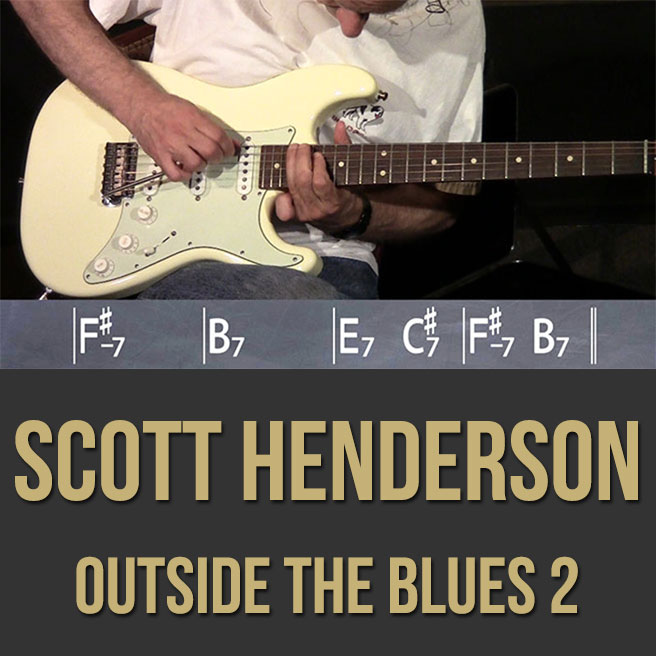
Continuing the topics discussed in the first video (reviewed here), Scott begins by introducing a new groove for the blues which allows both the blues style playing and more jazz/fusion style lines.
This video certainly brings in more of the outside sounds that are possible and man… they sound so good. In terms of pure quantity of melodic options, this video is filled with various approaches that Scott uses on the blues.
In addition to all that melodic stuff, Scott also demonstrates how he uses the whammy bar to get more slide guitar like sounds as well as different expressive bends and vibrato. All these sounds definitely are a big part of why his lines sound so vocal.
Towards the later part of the video, Scott switches to a slow E blues backing track that shows how he uses pentatonics to get interesting melodic lines that go out in a colorful way.
Related to all this content, there are backing tracks that you get if you purchase the two videos as a set. I strongly recommend getting that since it helps you practice this material after watching the video. I also find it helpful that Scott often mentions what scale or mode he’s using as he takes a solo. The video screen also frequently shows the chord symbols on screen for us to follow as Scott takes a solo.
In conclusion, this video in combination with the first part provides a huge treasure trove of solo lead guitar ideas within a blues to jazz context. If you’re new to playing over a more jazz blues chord progression, these two videos might be new and challenging for you. For those who already have some jazz blues vocabulary, you will still find new things to excavate from the video since so much of this is Scott’s personal approach. These are great videos and I certainly will be rewatching them to get more of these ideas and sounds into my playing.
Pros: A wonderful exploration of this topic by a master guitarist.
Cons: As with the first video, there are no transcriptions of the lines he plays in the video. That would have been cool! However there is a more recent book from Guitar Vivo that adapts this video into a book form which might be the answer to this.
TLDR: If you wanna play blues, but get a bit more outside sounding ideas, this video might be for you (but get the first video as well for this video to make more sense).
Get it here: https://www.mymusicmasterclass.com/premiumvideos/scott-henderson-blues-guitar-lesson-2/
[Submissions for Review Consideration]
- Are you an author who wrote a jazz, guitar or music book?
- Have you created a DVD or an online video course or subscription based website?
- Would you like me to review your book/course?
Please send me a message at azsamad3 at gmail.com with:
For courses: a link to the course/video/product + access info etc.
For books: a link to the book (Dropbox) or PDF attachment (if it’s small) for review consideration.
Depending on whether I dig the book/course, I’ll let you know if I do plan to review it!
I cannot guarantee a review for every submission & if I’m not too into it, I may opt not to review it. I mean, it’s better to get a good review that for me to write a bad review just because it’s not a match for the kind of stuff I dig right? :p
NOTE: All reviews reflect my honest personal opinion so be aware that I will point out both cool Pros and Cons that I see in the work. You dig?